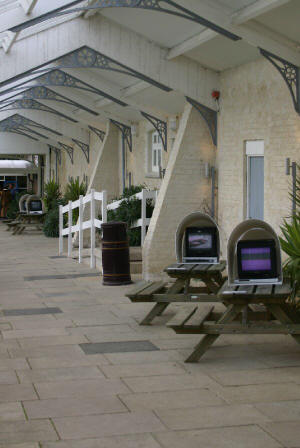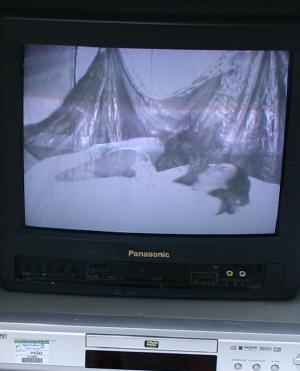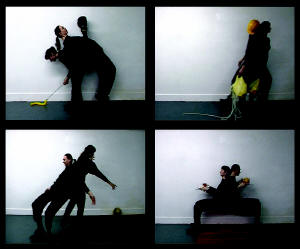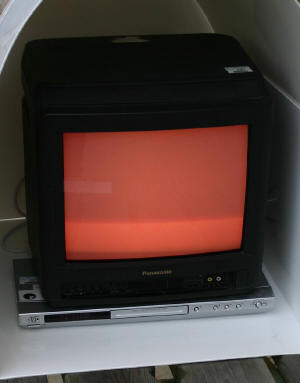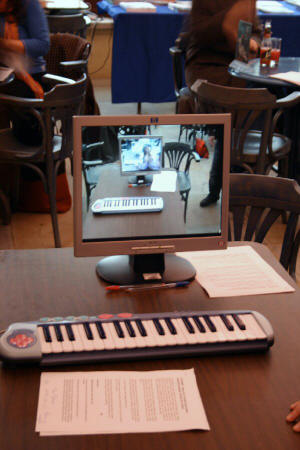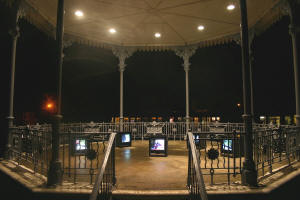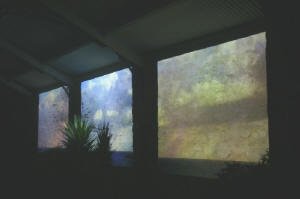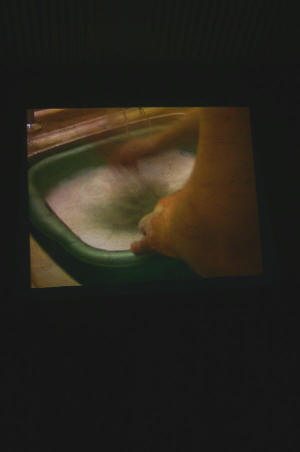| artcornwall | |||
| home | features | exhibitions | interviews | profiles | gazetteer | links | archive | forum | |||
|
Outsider Princess Pavilion, Falmouth 16th - 19th November 2006
Some were works that had
already been submitted for the festival, others were made by artists that
had been invited by him to contribute. Unlike most gallery exhibitions,
the show was open till 9 o’clock at night, and the work seemed to alter
its qualities depending on the ever-changing November light – with much of it coming
alive in the darkness as it fell in the late afternoon. (Indeed, the two projected video pieces were On picnic tables shielded
from the blustery wind by white plastic casing
were four monitors showing work by Paul Carter and Alexandra Zierle, Alban
Roinard, Gillian Holt and Mary Fletcher (above). Carter and Zierle’s
work had been seen earlier this year at Artonomy in Truro, and depicted
the two artists bound together at the waist engaging in a number of
compelling but absurd
studio set-pieces using
Back outside, Simon Jacques’ work was installed on tiny monitors on the walls of a white transit van. Part of the ongoing ‘In – transit’ project (right) , these were images of a spectacular thunderstorm recorded on a mobile phone in Durban, South Africa. In being reduced to pixels on such a small screen a strange digital transmutation took place, that somehow highlighted the peculiarities of the technology and the process of digitally encoding moving images. Centre-stage in the bandstand, Amanda Lorens had
installed ‘Close Embrace’ (left). Five monitors clad in black
panels showed the feet of tango dancers who had been filmed dancing in the
same space some days previously. Accompanying them was not music, but a
separate soundtrack in which the dancers reflected on the experience of
dancing as a form of intimate, and sometimes passionate, non-verbal
communication. Amanda showed ‘Tango in transit’ earlier in the year as
part of Tract Live art, which featured live dancers. Bandstands are
increasingly being used as venues for tango dancing across the country,
and Close Embrace had
many of the same themes as the Tract piece but its setting - lit by spotlights and surrounded
by Edwardian filigree iron-work - lent it Around tea-time the outdoor projectors were switched
on. Paul Ridout’s ‘Three degrees of separation’ (right) consisted
of the same seascape filmed using stop-motion time-lapse and projected out
of sync so that time moved from left to right across the three screens. Seen against a
slightly uneven whitewashed wall the slowly shifting image had a highly seductive and painterly
quality. Adjacent to it was Clare Bridgemans video (below) which was a remarkably
systematic and even obsessional record
This was a confident and professional first outing for Outsider video projects, which promises to bring to video art in Cornwall what PALP did to installation and artsurgery to live art.
www.outsidervideo.com
|
|||
